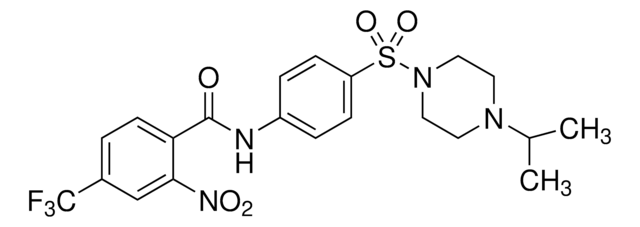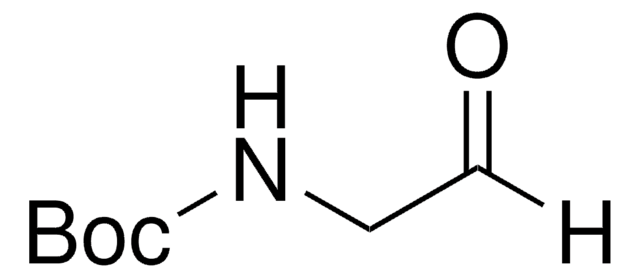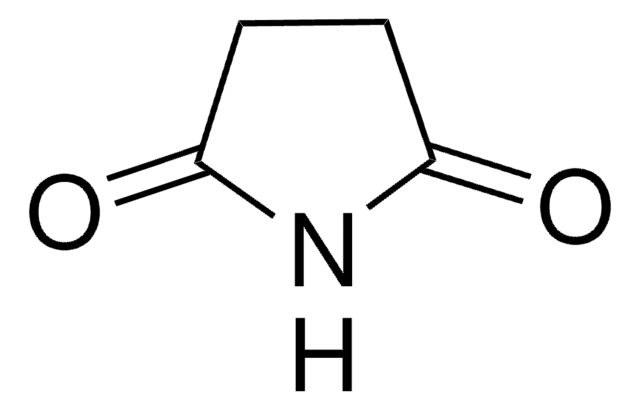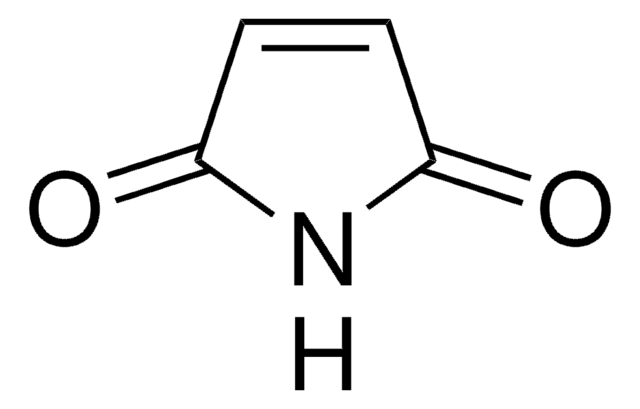A8597
1-Amino-3,3-diethoxypropane
liquid, ≥97%
Synonym(s):
3-Aminopropionaldehyde diethylacetal
Sign Into View Organizational & Contract Pricing
All Photos(1)
About This Item
Empirical Formula (Hill Notation):
C7H17NO2
CAS Number:
Molecular Weight:
147.22
MDL number:
UNSPSC Code:
12352202
PubChem Substance ID:
NACRES:
NA.77
Recommended Products
Product Name
1-Amino-3,3-diethoxypropane, ≥97%, liquid
biological source
synthetic (organic)
Quality Level
Assay
≥97%
form
liquid
solubility
water: miscible
density
0.91 g/mL at 25 °C (lit.)
storage temp.
room temp
SMILES string
CCOC(CCN)OCC
InChI
1S/C7H17NO2/c1-3-9-7(5-6-8)10-4-2/h7H,3-6,8H2,1-2H3
InChI key
PXXMSHBZYAOHBD-UHFFFAOYSA-N
General description
1-Amino-3,3-diethoxypropane is an effective modulator of alginate and chitosan based hydrogels and effectively used for the delivery of bone marrow stromal cells (BMSCs) for regeneration of cartilage.
Application
1-Amino-3,3-diethoxypropane has been used:
- with alginate in the preparation of hydrogel
- in the generation of polyethylene glycol (PEG) polyethylenimine (PEI) polyplexes conjugate for transfection studies in hepatocellular carcinoma cell cultures
- as a component of pH-sensitive PEG derivative for lipopolyplexes formation
Signal Word
Danger
Hazard Statements
Precautionary Statements
Hazard Classifications
Skin Corr. 1B
Storage Class Code
8A - Combustible corrosive hazardous materials
WGK
WGK 3
Flash Point(F)
172.4 °F - closed cup
Flash Point(C)
78 °C - closed cup
Personal Protective Equipment
dust mask type N95 (US), Eyeshields, Gloves
Choose from one of the most recent versions:
Already Own This Product?
Find documentation for the products that you have recently purchased in the Document Library.
Customers Also Viewed
Amine-reactive pyridylhydrazone-based PEG reagents for pH-reversible PEI polyplex shielding
Fella C, et al.
European Journal of Pharmaceutical Sciences, 34(4-5), 309-320 (2008)
BMSCs laden injectable amino-diethoxypropane modified alginate-chitosan hydrogel for hyaline cartilage reconstruction
Wan W, et al.
Journal of Material Chemistry B: Materials for Biology and Medicine, 3(9), 1990-2005 (2015)
Pyridylhydrazone-based PEGylation for pH-reversible lipopolyplex shielding
Nie Y, et al.
Biomaterials, 32(3), 858-869 (2011)
Caroline R Basso et al.
Talanta, 197, 482-490 (2019-02-18)
A new immunosensor using hybrid nanomaterials for the detection of dengue virus was demonstrated in this work. This immunosensor composed of nanoparticles of γ-Fe2O3(SAMN) modified with MPA- SAMN@MPA was characterized by FTIR spectroscopy, transmission electron microscopy,quartz crystal microbalance, UV-vis and
Massimiliano Magro et al.
Amino acids, 51(4), 679-690 (2019-02-07)
The preservation of enzymatic activity is a fundamental requirement for exploiting hybrid nano-bio-conjugates, and the control over protein-nanoparticle interactions, leading to stable and catalytically active hybrids, represents the key for designing new biosensing platforms. In this scenario, surface active maghemite
Our team of scientists has experience in all areas of research including Life Science, Material Science, Chemical Synthesis, Chromatography, Analytical and many others.
Contact Technical Service











